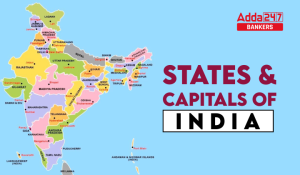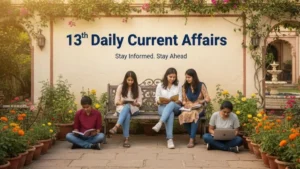
The upcoming important exams are NABARD grade A and grade B, in which there is a section of Economic & Social Issues (with focus on Rural India) wherein 40 questions will be there carrying 40 marks. So, for the same, it becomes really important to have an in-depth knowledge of the Indian Economy covering topics such as Inflation, Poverty Alleviation and Employment Generation, Industrial and Labour Policy, Social Structure in India etc. Further its imperative to be aware of the Programmes and Schemes taken up by the government to counter the issues arising. To help you with this, today, we are providing you with all necessary information related to the mentioned field which will help you to fetch some good marks. This is the Third part of the Study Note Series which would be covering Poverty Alleviation portion.
National Social Assistance Programme (NSAP)
It came into effect from 15th August, 1995.
It represents a significant step towards the fulfillment of the Directive Principles in Articles 41 and 42 of the Constitution through the enunciation of a National Policy for social assistance benefits to poor households in the case of old age, death of the primary breadwinner and maternity.
It is a Centrally Sponsored Scheme with 100 per cent Central assistance provided to States/UTs.
This programme has three components which are
(i) National Old Age Pension Scheme (NOAPS)
(ii) National Family Benefit Scheme (NFBS) and
(iii) National Maternity Benefit Scheme (NMBS)
which are targeted at people living below the poverty line. Further,
a) Under the National Old Age Pension Scheme (NOAPS), old age pension of Rs.75 per month is provided to persons of 65 years and above who are destitute.
b) The National Family Benefit Scheme (NFBS) provides a lump sum family benefit of Rs.10,000 to the bereaved household in case of the death of the primary breadwinner irrespective of the cause of death. This scheme is applicable to all the eligible persons in the age group 18 to 64.
c) Under the National Maternity Benefit Scheme (NMBS) there is a provision for payment of Rs.500 per pregnancy to women belonging to poor households for prenatal and post-natal maternity care up to the first two live births. This benefit is provided to eligible women of 19 years and above.
It is implemented in the States/UTs through Panchayats and Municipalities.
Poverty Alleviation Programmes are being implemented based on the perspective of the Tenth Five Year Plan (2002-2007) i.e. Expanding self-employment programmes and wage employment programmes for addressing poverty.
Some of the examples of self-employment programmes are Rural Employment Generation Programme (REGP), Prime Minister’s Rozgar Yojana (PMRY) and Swarna Jayanti Shahari Rozgar Yojana (SJSRY).
Rural Employment Generation Programme (REGP) aims at creating self-employment opportunities in rural areas and small towns. Khadi and Village Industries Commission is implementing it. Under this programme, one can get financial assistance in the form of bank loans to set up small industries.
The educated unemployed from low-income families in rural and urban areas can get financial help to set up any kind of enterprise that generates employment under PMRY.
SJSRY mainly aims at creating employment opportunities—both self-employment and wage employment—in urban areas.
Under self-employment programmes, financial assistance was given to families or individuals. Since the 1990s, this approach has been changed & self-help groups are encouraged. The government provides partial financial assistance to SHGs which then decide whom the loan is to be given for self-employment activities. Swarnajayanti Gram Swarozgar Yojana (SGSY) is one such programme.
Govt. Programmes to generate wage employment for the poor unskilled people living in rural areas are National Food for Work Programme (NFWP) and Sampoorna Grameen Rozgar Yojana (SGRY). In August 2005, the Parliament has passed a new Act to provide guaranteed wage employment to every household whose adult volunteer is to do unskilled manual work for a minimum of 100 days in a year. This Act is known as National Rural Employment Guarantee Act–2005. Under this Act, all those among the poor who are ready to work at the minimum wage can report for work in areas where this programme is implemented.
Another approach to addressing poverty is to provide minimum basic amenities to the people. India was among the pioneers in the world to envisage that through public expenditure on social consumption needs — provision of food grains at subsidized rates, education, health, water supply and sanitation— people’s living standard could be improved. Three major programmes that aim at improving the food and nutritional status of the poor are Public Distribution System, Integrated Child Development Scheme and Midday Meal Scheme. Pradhan Mantri Gram Sadak Yojana, Pradhan Mantri Gramodaya Yojana, Valmiki Ambedkar Awas Yojana are also attempts in the same
direction.
Nutrition: National Food Security Act (NFSA), 2013
India has had a long history of maintaining a public distribution system (PDS) whereby the government offers subsidized food grains to the citizens. Now, the National Food Security Act (NFSA) was passed.
Under it, 75 percent of rural and 50 percent of urban populations are eligible for five kilograms of food grain per person per month at highly subsidized prices.
A small subset of extremely poor households is provided seven instead of five kilograms of foodgrain under the program.
In the broadest terms, the way the PDS works is that the government procures grain at pre-specified Minimum Support Prices (MSP) in selected regions of the country and stocks it. It offers this grain to the states that in turn pass them on to beneficiaries through a vast distribution network that ends at the PDS shops. The central government has authorized the states to identify the beneficiaries as per their choice of criteria.
Nutrition: Mid-day Meal Scheme (MDMS)
MDMS was launched as a Centrally Sponsored Scheme in 1995 with the objective of improving the nutritional status of school children, eliminating classroom hunger and enhancing school enrolment, retention and attendance. From 2008-09, the programme has been extended to upper primary level. The government envisages an expansion of MDMS in a progressive manner including to children in private schools (since they now have a 25% quota for Economically Weaker Sections), particularly in SC/ST and Minority concentrated areas.
Employment: Mahatma Gandhi National Rural Employment Guarantee Act (MGNREGA)
MGNREGA guarantees 100 days of unskilled employment at a specified wage in a given financial year to one member of every rural household. The scheme was launched in 2006-07 in 200 selected districts and gradually extended to the whole country by 2008-09.
The underlying objective of the scheme is to enhance the livelihood security of the poor households in rural areas of the country. Other objectives include rejuvenating natural resource base, creating productive rural assets, stimulating the local economy by providing a safety net to rural poor, ensuring women empowerment and strengthening grassroots level democratic institutions.
Approximately two-thirds of work taken up under MGNREGA are related to water conservation and other activities with positive impact on agricultural productivity.
For suggestions and queries kindly drop a mail at…
contact@bankersadda.com or gopal.anand@adda247.com
You may also like to Read:




 List of States and Capitals of India 202...
List of States and Capitals of India 202...
 13th January, 2026 Current Affairs (Dail...
13th January, 2026 Current Affairs (Dail...
 Daily Current Affairs Quiz 13th January,...
Daily Current Affairs Quiz 13th January,...








